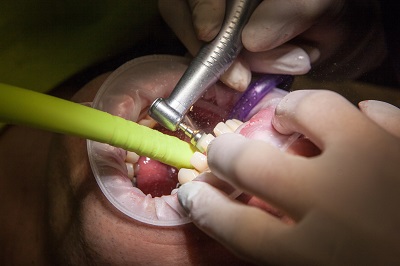Putting on a dental crown to seal a fixed tooth
Has this ever happened to you?After weeks, months, and years of eating yummy food, one of my teeth started hurting. “Oh oh, hopefully this’ll just be a little boo boo …” I thought jokingly to myself but a dentist visit soon thereafter brought the inconvenient truth (hi Al Gore) to the forefront: my tooth root was infected! To do everything possible to save the tooth, I had to undergo a root canal procedure which meant sitting in the dentist’s chair for over an hour while listening to the dentist’s drill digging deeper and deeper into my tooth … well, I do not know if any of you could imagine anything worse, but I could not. Once the procedure was finally over, I had to get a dental crown fitted and placed on top of the treated tooth to avoid reinfection. “Let’s see which color fits best with my remaining teeth …”
What is a dental crown?
A dental crown needs to be placed to avoid potential reinfections when dental fillings and/or inlays are not enough to completely seal off a previously treated tooth. Such crowns are often used for teeth that have undergone root canal procedures but are also frequently found as parts of dental bridges. Dental crowns are particularly useful for:- Stabilizing teeth that are at a high risk of crumbling/chipping/breaking
- Protecting teeth with large fillings
- Fixing detachable parts of dentures, dental prostheses, and other tooth replacements
The very first dental crowns were made out of metal or even gold and were easily distinguishable from healthy teeth. Over the past few decades, dental medicine has fortunately made significant progress and produced numerous much better and more aesthetically pleasing crown types. Some of the most frequently used ones are:
Porcelain-fused to Metal Crown – A tooth cap made out of metal and with a ceramic coat on top to make sure that it is almost impossible to differentiate from healthy teeth. The only characteristic that gives this type of crown away is a narrow metal edge close to the gum line.
Zirconium Crown – A completely metal-free tooth cap with a ceramic coat on top that does not have any metal edges along the gum line.
Ceramic Crown – A 100% metal-free tooth cap that virtually completely blends in with healthy teeth. Usually used on canine teeth and incisors for which aesthetics are a top priority.
“Lots of options to pick from. But as long as I will not have to sport a gold tooth, I’m happy with any of these options. Out of interest – what are my alternatives?” I asked my dentist after he had finished sealing my treated tooth with a provisional crown.

What are alternatives for a dental crown?
"Well, since a dental crown is only used on severely damaged and endangered teeth, the number of viable alternatives is fairly limited. A dental implant, however, can almost always be the last solution.” The key advantage of a dental implant is its superior optical appearance due to the fact that it is a complete replica of the tooth that it replaces. However, the key trade-off for the superior look is the fact that the damaged tooth must be removed completely and permanently. Also, dental implants can cost up to EUR 2,000 which is significantly more than the cost of dental crowns and dental insurance generally pays reimburses the same amount for implants as it does for crowns. “So let me get this straight: I would not only lose my tooth for good but I would also have to pay more for it? In that case, let’s just stick with the crown please. How much will one of those cost me?”How much does a dental crown cost?
A dental crown can cost between EUR 300 and EUR 1.000 depending on the materials used and the particular amount of effort that is required for placement from the dentist. Currently, insurers in Vienna and Austria provide a benefit payment only for metal crowns as part of their basic coverage packages. The differential between this benefit payment and the total cost of a crown has to be borne by the patient in the form of out-of-pocket costs (up to 80%+). The benefit payment amount and, conversely, the out-of-pocket cost amount for the patient vary depending on type and location of a treated tooth – in general, insurers pay less for non-visible posterior teeth and molars. Due to the long lifetime of dental crowns, insurers cover the manufacture of a new crown for any given tooth only once every 6 years. Also important to note is the fact that dentists in Austria can freely set pricing for fixed tooth replacements (incl. dental crowns), which has a direct impact on the amount that a patient may have to pay out-of-pocket. Fortunately, in Austria there is a 2-year guarantee for tooth replacements, meaning that dentists are obligated to replace any dental crowns that break within a 2-year period after placement for free. “Looks like this will get quite expensive, but a pretty smile is worth its weight in gold, no? Let’s go ahead with a modern ceramic crown please.”
For more interesting stories, feel free to check out the DentalAce blog and join our online community with a free subscription.


